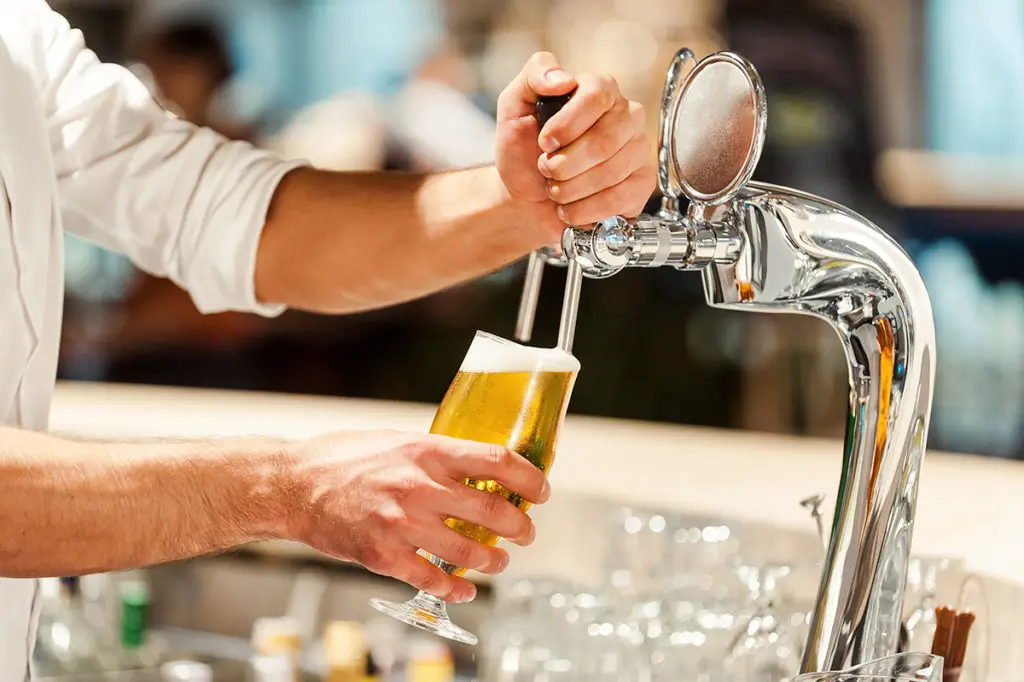Beer has been a staple beverage for almost every culture since the dawn of civilization, but in recent years, appetites for more exotic and cultural flavors in beer have grown. Accordingly, the craft beer scene has seen a massive surge in people appreciating the taste of a good beer. Tasting beer like a pro involves a simple process of examining the beer’s aroma, hue, and flavor profile.
Here’s how to taste beer like a pro:
- Pour the beer.
- Smell the aromas.
- Examine the color.
- Smell it one more time.
- Taste the brew.
- Admire the flavor and enjoy your beverage.
Expert brewers have had to practice careful tasting techniques for centuries in order to guarantee the fineness of their brew. Luckily, if you want to know how to taste beer like a pro, you just need to follow a few simple steps. Keep reading to see a step-by-step guide on how to taste beer like a pro, as well as some details on the finer points of beer tasting.

BEER DROP: Boxes of beer from Award-winning microbreweries → Join The Club
1. Use Proper Beer Pouring Technique
Selecting the proper glass and carefully pouring the beer are essential steps to making sure you can properly admire the qualities of a brew. For tasting most beers, a No products found. (Amazon) is recommended.
If you’re mostly tasting lighter beers with lower alcohol content, then No products found. (Amazon) will do just fine.
Begin the pour with the glass tilted and the neck of the bottle turned carefully. Then pour it gently along the inside of the glass. A perfect pour will have a head of foam that’s large enough to taste but not so large as to impede your enjoyment of the beverage.
Different types of beers should be served at different temperatures.
Lighter beers with delicate flavors benefit from chilling, whereas deep-flavored and darker beers with higher alcohol content should be served closer to room temperature. Most breweries have specific serving recommendations on their websites for each beer they offer.

2. Smell the Aromas in The Beer
The first thing you’ll want to do after pouring the beer is to smell it.
Don’t be afraid to stick your nose right inside the glass, but be careful of the foam. Allow the aroma to fill your nostrils slowly, and take note of the nuances. Common aromatic qualities in beer are fruity, floral, earthy, or even spicy, depending on the brew itself.
Over time, you’ll become more accustomed to appreciating and describing how a beer smells.
3. Examine the Color of The Beer
Lift the glass up to the light and examine the color and opacity of the brew.
Some styles, such as lager, are meant to be clear with a slight coloration. Other brews, such as stouts, are nearly opaque with a dark brown or even black coloration.
Also, it’s important to examine the color and retention of the foamy head. Beers that are high in gluten will retain their head longer, which is considered a desirable quality. You may also want to gently swish or agitate the beer to oxygenate the brew and allow the flavors and aromas to develop more in the glass.
4. Smell The Beer One More Time
After examining the color and agitating the beer a bit, the warmth of your hands and the action of swirling the beer will release more developed aromatic notes. It’s a good idea to smell the beer a second time to really saturate your nose with the aroma of the beer.
The sense of smell plays an important role in the overall sense of taste, so properly appreciating the aromatic notes of a beer is essential to taste beer like a pro.
5. Taste the Brew
Now for the fun part of actually tasting the beer. Sip slowly from the lip of the glass, making sure to get some of the foamy head along with your sip.
Allow the liquid to flow over your tongue, coating your entire mouth.
Don’t be afraid to take a large sip. Allow the liquid to flow all the way to the back of your mouth and swallow. Wait a few seconds to let the flavor develop on your tongue before taking another sip. You might want to smell the beverage again to compare the flavors with the aromatic qualities.
6. Admire the Flavor of the Beer and Enjoy Your Beverage
Take note of the various flavors and how smooth the beverage feels in your mouth. Discuss the flavor with your friends and see what they think of the brew. Continue sipping slowly until the beverage has been thoroughly enjoyed.
Over time, your appreciation for the different flavors and aromatic qualities of beer will improve.
You can also do some research on the various brewing styles to better acquaint yourself with the theory and execution behind the flavors.
Are Beer Tastings a Thing?
Beer tastings are a thing, as they are frequently done by professional brewers, beer journalists, and private enthusiasts hosting in a social context. There are a wide variety of different beers with vastly different flavor profiles and qualities.
The qualities considered desirable are different for different styles of beer. Generally, a full flavor with a smooth mouthfeel and nuanced aroma are the defining qualities of a good brew.
According to Craftbeeracademy.com, beer tastings can range from organized events hosted at bars to humble social gatherings within the home. Inviting people to try a flight of various brews is a great way to share the joy of beer with your friends.
If you’re planning on hosting a beer tasting, the only real recommendation is that you get plenty of good beer and food. You might want to enquire at a brewery if they host tasting parties themselves.
What Is a Beer Taster Called?
A beer taster is called a “sommelier” or “cicerone.” These are professionals in the hospitality industry tasked with identifying, selecting, and commenting on a range of fine beers. They’re typically trained and certified by an organization of cicerone.
The word “cicerone” comes from the name of Roman statesman Marcus Tullius Cicero and is used to describe expert guides for many different pursuits, such as those found in museums or art galleries.
The term cicerone is mainly used in US English to refer specifically to sommeliers of beer.
If you live in the US and you’re interested in being certified as a cicerone, you can check out that site for more information.
As mentioned before, the process of tasting beer like a pro follows a relatively straightforward progression focused on admiring the qualities of the beer. The most important factors of beer quality are flavor, mouthfeel, color, and aroma.

Final Thoughts
Beer tasting is an ancient custom that has developed alongside mankind for many centuries. Learning to properly appreciate the form, flavor, and scent of a good beer is a great way to appreciate the history and chemistry of this special beverage.
When organizing beer tastings, it’s important to always drink responsibly and make sure nobody drinks and drives. Enjoying beer should be about the flavors and social atmosphere. Plenty of good food and beer should be all you need for a good-tasting session.
If you have any questions or concerns, feel free to fire away in the comments section.
